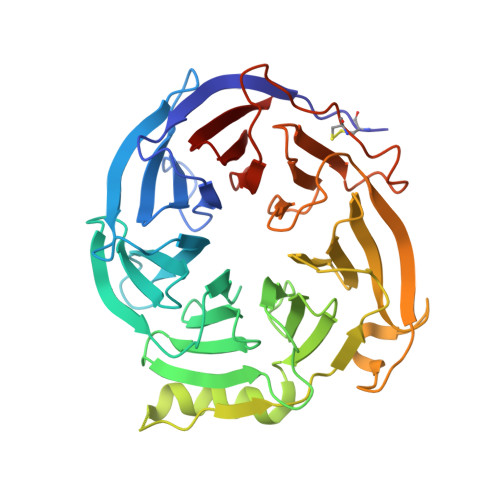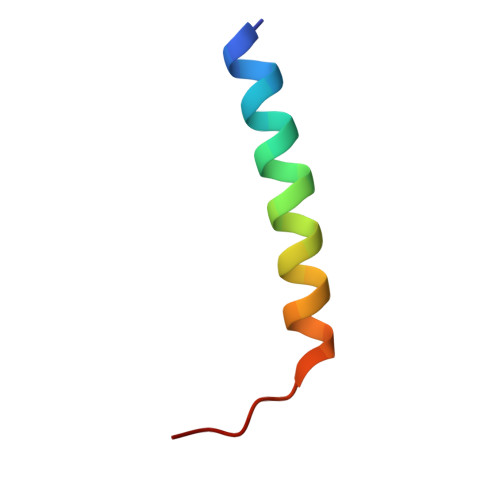Discovery of the Clinical Candidate MAK683: An EED-Directed, Allosteric, and Selective PRC2 Inhibitor for the Treatment of Advanced Malignancies.
Huang, Y., Sendzik, M., Zhang, J., Gao, Z., Sun, Y., Wang, L., Gu, J., Zhao, K., Yu, Z., Zhang, L., Zhang, Q., Blanz, J., Chen, Z., Dubost, V., Fang, D., Feng, L., Fu, X., Kiffe, M., Li, L., Luo, F., Luo, X., Mi, Y., Mistry, P., Pearson, D., Piaia, A., Scheufler, C., Terranova, R., Weiss, A., Zeng, J., Zhang, H., Zhang, J., Zhao, M., Dillon, M.P., Jeay, S., Qi, W., Moggs, J., Pissot-Soldermann, C., Li, E., Atadja, P., Lingel, A., Oyang, C.(2022) J Med Chem 65: 5317-5333
- PubMed: 35352560
- DOI: https://doi.org/10.1021/acs.jmedchem.1c02148
- Primary Citation of Related Structures:
7QJG, 7QJU, 7QK4 - PubMed Abstract:
Polycomb Repressive Complex 2 (PRC2) plays an important role in transcriptional regulation during animal development and in cell differentiation, and alteration of PRC2 activity has been associated with cancer. On a molecular level, PRC2 catalyzes methylation of histone H3 lysine 27 (H3K27), resulting in mono-, di-, or trimethylated forms of H3K27, of which the trimethylated form H3K27me3 leads to transcriptional repression of polycomb target genes. Previously, we have shown that binding of the low-molecular-weight compound EED226 to the H3K27me3 binding pocket of the regulatory subunit EED can effectively inhibit PRC2 activity in cells and reduce tumor growth in mouse xenograft models. Here, we report the stepwise optimization of the tool compound EED226 toward the potent and selective EED inhibitor MAK683 (compound 22 ) and its subsequent preclinical characterization. Based on a balanced PK/PD profile, efficacy, and mitigated risk of forming reactive metabolites, MAK683 has been selected for clinical development.
- Novartis Institutes for BioMedical Research, 4218 Jinke Road, Shanghai 201203, China.
Organizational Affiliation:



















